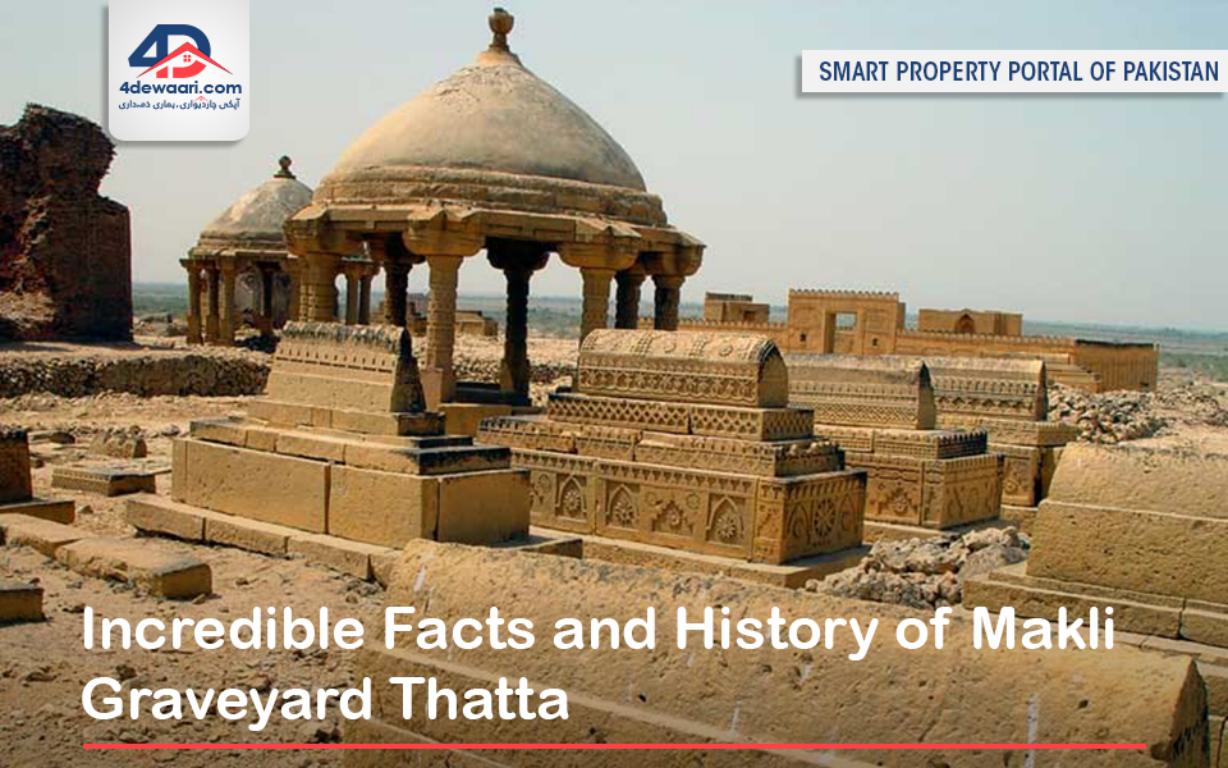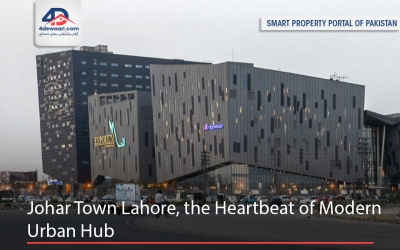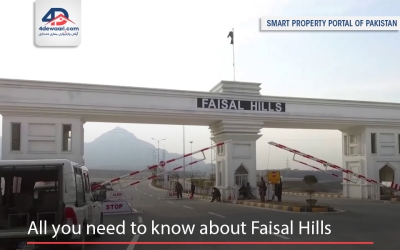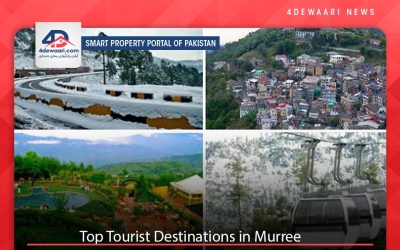Makli Graveyard is site that instantaneously aspires an awe in you at the very glance filled with the decayed bones of the great Sufi giants who would be the manifestation of miracle in their own skins. The site has an immense historic as well as architectural significance and that’s why it has been preserved and taken care of hitherto. Since 1981 it has been declared as a World Heritage Site by UNESCO. It is a site in Sindh that receives the largest number of tourists and visitors.
It is one of the world’s largest funerary sites and is perhaps the largest necropolis in the entire world. It stretches for an area of nearly 10sq.km. (3.86sq.mi.) and is home to anywhere between half a million to a million tombs. It is estimated that among the cemetery’s residents, nearly 125,000 of them were saints who belonged to the Muslim religion. The tombs were built over a long span of time, about a period of 400 years by the Sindh civilization between the 14th and 18th centuries. The site is a historical landmark within the Sufi faith, otherwise known as Islamic mysticism or “the inward dimension of Islam.”
See Also
Old Hindu Temples in Pakistan
Location in Thatta
To get to the site, one must travel roughly 6km. (3.73mi.) outside of the city of Thatta to a large plateau where the vast graveyard lies. The necropolis extends from the city of PirPatho at the southern border of the Makli Hills and continues northward on the plateau in a shape that is similar to that of a diamond. To the east, its border also extends to the Makli Hills. The Makli Graveyard distance from Karachi is 1 hr 59 min (100.8 km) .
The Tale of Sufi Saint Hammad Jamali
One legend dictates that the site was given its name by the Sufi saint Sheikh Hamad Jamali after being told the tale of a Hajj pilgrim (or one who is on their way to Mecca) who had a deeply spiritual experience at the site. While still in awe of his spiritual experience, the pilgrim exclaimed that the site was like his own little Mecca. Of course, Mecca in the Muslim religion is not only said to be the birthplace of the prophet Muhammad, but it is also said to be the site where Muhammad was visited by the archangel Gabriel. In the Quran, this event is said to be the prophet’s first spiritual revelation. Thus, the Makli Necropolis is a place of spiritual awakening for those who have taken their final rest.
The Tale of Mai Makli
However, another story says that a holy woman by the name of “Mai Makli” had her prayers answered by God, which prevented Sultan Firuz Shah Tughlaq, of the Turkish Tughlaq Dynasty, from conquering the city of Thatta. It is said by locals that she is buried at the site without a headstone or a marker of any kind. The locals believe that she is buried very close to one of the walls of the tomb of Sultan Jam Nizamuddin II, who was the ruler of Sindh between 1461 A.D. and 1508 A.D.
See Also
Raheem Yar Khan Famous Places to Visit
Both legends make for very interesting stories. Regardless of which of the two tales you believe, there is no doubting that this site has become one of the holiest landmarks in the Sufi faith and in Pakistan as a whole.
It would be another Sufi saint, Shaikh Jamali, who would become the first person interred at the site in the 14th century. After making the plateau a Sufi gathering site, the saint decided that he would like to be buried there upon his death. After hearing the news of the saint’s burial arrangements, the then ruler of the Sindh civilization, Jam Tamachi, decided to venerate the saint and arrange for his own burial site to be near the burial site of the saint. It did not take long for many other people in the Sufi and Islamic faiths to decide to be buried at the site as well. The site reached its peak in use as a funerary site during the Samma dynasty. This is due to the fact that the Samma dynasty had made their capital very close to the city of Thatta. However, the most prominent architectural tombs at the site date from the Mughal era, or between 1570 A.D. and 1640 A.D. The tombs dating from the Samma dynasty can be found in the northern area of the graveyard, while the more architecturally significant tombs can be found along the site’s southern border.
Architectural Design
The architecture itself at the site is in the Chaukhandi style, which takes its name from the Chaukhandi tombs just outside of Karachi, Pakistan. The style incorporates designs from the Muslim, Hindu, Persian, Mughal, and Gujarati styles. This results in some of the most spectacular, beautiful, and intricate masonry designs around. The hallmark of the Chaukhandi style was the large sandstone slabs that were decorated with fantastic motifs by very skilled stonemasons. The first tombs at the site were constructed by stacking anywhere between three to six solid sandstone slabs on top of one another. Once stacked, the slabs would be in the shape of a pyramid. Moving into the 15th century we see decorated rosettes and circular patterns emerge, and we see biographies on tombs written in fine Arabic calligraphy as well. Some tombs even feature large chambers and corridors, and others feature designs that were inspired by cosmology. A mix-match of Jainist designs, blue tile, royal mausoleums, statues of warriors and minarets dot the cemetery, making this site a beautiful sandstone collage of middle and far-eastern cultures.
Despite its rich history and vast beauty, parts of the site are in a state of decay. Due to recent floods, trash, and damage to the structural integrity of some tombs, the site is in desperate need of renovation and conservation efforts.
There is so much history at the Makli Necropolis. Countless sultans, sheiks, saints, and devout Muslims have been buried or interred at this site. The mighty majesty of the site’s many beautifully decorated sandstone tombs and mausoleums leaves one in a perpetual state of awe while in its presence. One could spend many hours, even days exploring the vastness and wonder of this site. Though the site has run into the need for conservation efforts in recent years, it still remains one of the most important landmarks in the Sufi faith, as well as in Pakistani culture.

















